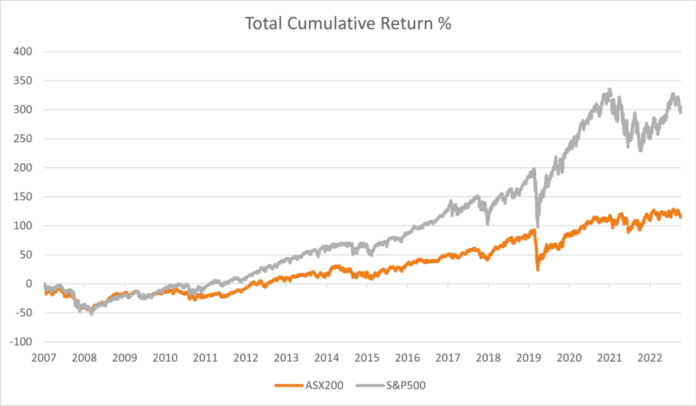The all ords (All Ordinaries Index) is one of the most important stock market indexes in Australia. It shows how the biggest companies on the Australian Securities Exchange (ASX) are doing overall. Many people use the all ords to see if the Australian market is going up or down. It helps investors, traders, and even beginners understand how strong or weak the economy might be. Even if you are new to the stock market, learning about the all ords can make things easier for you when reading financial news or planning to invest in shares.
The all ords includes around 500 top companies listed on the ASX. When these company shares rise or fall, the index also changes. It works like a scorecard for the whole market. The number goes up when most companies do well and down when they do badly. Many people follow the all ords every day to see trends in different sectors like mining, banking, and tech. Understanding it helps you make smarter choices and gives you a clear picture of how Australia’s business world is performing.

All Ords: Understanding Australia’s Main Stock Market Index in Simple Words
The all ords (All Ordinaries Index) is one of the oldest and most well-known stock market indexes in Australia. It shows how the biggest companies on the Australian Securities Exchange (ASX) are performing overall. Many investors and financial experts follow the all ords daily to understand the health of the Australian economy. Even if you are not an investor, learning about the all ords can help you see how businesses in Australia are doing. It’s like a simple scorecard that tells if the market is strong or weak.
The all ords includes about 500 top companies listed on the ASX. When these company shares go up or down, the index changes too. This makes the all ords a great way to check the mood of the market. If the index rises, it means most companies are doing well. If it falls, it means many companies are facing problems. Understanding the all ords helps people make smarter money choices, whether they’re investing, saving, or just staying informed about the economy.
What Is All Ords and Why It Matters in Australia
The all ords is short for “All Ordinaries Index.” It was created in 1980 and is the oldest index in Australia. It tracks the share prices of the top 500 companies listed on the Australian Securities Exchange (ASX). The goal of the all ords is to show how the entire share market is performing, not just a few big names.
It matters because it gives everyone—investors, businesses, and even students—a simple way to see how Australia’s economy is doing. When the all ords goes up, it shows that confidence in the market is growing. When it drops, it often means people are more careful or worried about the economy.
How the All Ords Index Works in Simple Terms
The all ords works by measuring the total value of the biggest 500 companies on the ASX. Each company’s share price affects the index depending on its size. Big companies like BHP, Commonwealth Bank, and Wesfarmers have more impact than smaller ones.
If many companies in the all ords go up in value, the index number also rises. If they fall, the number drops. This number helps traders and investors understand market trends. It’s like a “mood meter” of the Australian economy—showing when people feel confident or cautious.
The History and Growth of the All Ords
The all ords was first launched in January 1980 with a base value of 500 points. Since then, it has grown and changed with Australia’s economy. During strong economic times, the index climbs higher. During global crises or recessions, it drops.
In the 2000s, the all ords crossed 5,000 points for the first time, showing massive growth in the market. Although it sometimes falls during tough times like the Global Financial Crisis or the COVID-19 pandemic, it always recovers over time. This shows that the Australian economy has strong long-term potential.
What Makes the All Ords Different from Other Indexes
Many people confuse the all ords with other indexes like the ASX 200. The main difference is the number of companies included. The all ords includes around 500, while the ASX 200 focuses only on the top 200 companies.
This means the all ords gives a bigger and clearer picture of the whole market. It includes both big and mid-sized companies, giving a wider view of how Australia’s business world is performing.
How Investors Use the All Ords to Make Smart Choices
Investors use the all ords as a guide. If the index is going up, they may feel more confident about buying shares. If it’s going down, they might wait or be more careful.
Fund managers also compare their portfolio performance with the all ords. For example, if a fund performs better than the all ords, it means it’s doing well. If it performs worse, it needs improvement.
Everyday Australians use it to understand their superannuation (retirement savings), since many super funds are linked to the stock market.
The Top Companies Included in the All Ords
The all ords features many of Australia’s most powerful and well-known companies. These include:
- BHP Group (mining and resources)
- Commonwealth Bank (banking and finance)
- Wesfarmers (retail and industrial)
- CSL Limited (healthcare and biotech)
- Woolworths Group (supermarkets and retail)
These large companies help keep the Australian economy strong. When they grow, the all ords usually goes up too.
How the All Ords Affects Everyday Australians
Even if you don’t buy shares, the all ords still affects you. When the index goes up, it can mean that companies are earning more money. This might lead to job growth, higher wages, or better business confidence.
When the index drops, it can lead to less spending, fewer job openings, and slower growth. That’s why many people keep an eye on the all ords even if they’re not directly investing in the stock market.
Tips to Read and Understand the All Ords Chart Easily
Here are some easy tips to help you read the all ords chart:
- Check the daily change: If the index number is higher than yesterday, the market is positive.
- Look at trends: See if the all ords has been rising or falling for days or weeks.
- Watch global news: International events like oil prices or wars can affect the index.
- Stay calm: Small ups and downs are normal. Focus on long-term trends, not daily changes.
All Ords vs ASX 200: What’s the Real Difference?
The all ords and ASX 200 are both used to track the Australian stock market, but they have key differences.
- All Ords: Tracks about 500 companies, giving a broad view.
- ASX 200: Focuses only on the 200 largest companies, offering a sharper but narrower view.
If you want to see the big picture of how all types of Australian businesses are doing, the all ords is the better choice.
Conclusion
The all ords is more than just a number—it’s a mirror of Australia’s economy. It tells us how confident people are, how companies are performing, and where the market might be heading. Whether you’re an investor or just curious about business trends, following the all ords helps you stay informed.
Remember, markets go up and down all the time. What matters most is understanding the reasons behind these changes and making smart choices for the long term.
FAQs
1. What does “all ords” stand for?
It stands for “All Ordinaries Index,” which tracks the share prices of the top 500 companies on the ASX.
2. How is the all ords calculated?
It’s based on the total market value of all 500 companies included in the index.
3. Is the all ords the same as the ASX 200?
No, the all ords covers 500 companies, while the ASX 200 includes only the top 200.



